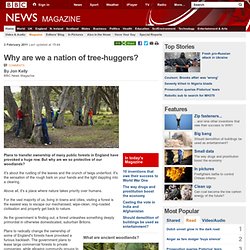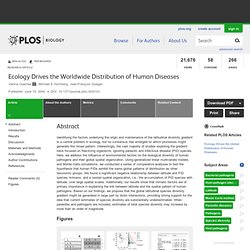

Fracking technique proposed for South Wales was 'probable' cause of Blackpool earthquake, report finds. Campaigners say the controversial practice of "fracking" for gas must never be allowed to come to Wales after it was found to be the likely cause of earth tremors on the UK coast.

The controversial technique to extract gas from the ground was the "highly probable" cause of minor earth quakes on Lancashire’s Fylde coast, according to a new independent report. It comes just days after Vale of Glamorgan council blocked plans to test drill for gas at an industrial estate – plans which if successful could have led to further applications to use fracking in the South Wales. Fracking involves extracting gas reserves from underground by a process of hydraulic fracturing of shale rock using high pressure liquid to release gas – a process green groups claims is damaging the environment. Oil and gas firm Cuadrilla commissioned independent experts to investigate links between the tremors and fracking at their Preese Hall-1 well in Lancashire.
"There has to be a moratorium now. Worry for homeowners who face the threat of fracking. Fracking has already caused small earthquakes in the north-west, but homeowners in the vicinity of shale gas extraction could face an even worse aftershock: falling house prices. John Johnson, manager of estate agent Farrell Heyworth in the Lancashire town of Poulton-le-Fylde, near one of the main drilling sites, says: "There are a lot of properties coming on to the market, and some of the owners are saying they want to get out before prices start dropping.
" Fracking involves drilling a well hundreds of metres into the ground and pumping it full of water, sand and chemicals to fracture the rock and release methane gas. The process was halted in the UK in June 2011 after two earthquakes in two months near Blackpool followed drilling at sites in Lancashire by Cuadrilla Resources.
An independent scientific report recently recommended that fracking could resume, subject to stricter controls, but fracking companies are still awaiting the results of a government review. Fish dumping 'will ruin industry' The UK fishing industry is warning it faces ruin because of EU quotas which result in thousands of tonnes of dead fish being dumped back into the sea.

It says fishing crews often continue catching large amounts of fish such as cod by accident after exceeding quotas - and have no option but to dump them. Ministers are pushing for a quota increase to help solve the problem. Generous : Switch it off at the Plug. (Don't Stand By.) The number of TVs in the UK is estimated to reach 74 million by 2020, meaning that there will be more televisions than people to watch them – or maybe we’ll be watching more than one at once. But Britain is a nation on stand-by. We waste the equivalent of around two power stations’ worth of electricity each year simply by leaving TV sets and other gadgets on standby mode. When electrical equipment is in sleep mode it uses roughly 7TWh of energy and emits around 800,000 tonnes of carbon.
To put it another way, the entire population of Glasgow could fly to New York and back and the resulting emissions would still be less than those from devices left in sleep mode. Cesium-137 forecast shows high altitude radiation cloud concentrate over western US on April 12. Addressing the nuclear waste issue. Public release date: 4-Apr-2011 [ Print | E-mail Share ] [ Close Window ] Contact: Megan Fellmanfellman@northwestern.edu 847-491-3115Northwestern University Researchers from Northwestern University and Argonne National Laboratory have an enhanced understanding of a common freshwater alga and its remarkable ability to remove strontium from water.

Insight into this mechanism ultimately could help scientists design methods to remove radioactive strontium from existing nuclear waste. Strontium 90, a major waste component, is one of the more dangerous radioactive fission materials created within a nuclear reactor. When Does a Nuclear Disaster End? Never. Tony Cartalucci, Contributing WriterActivist Post Those who think Japan's Fukushima disaster is today's headlines and tomorrow's history need to take a good look at the Chernobyl disaster, which to this day is a continuing threat to the people of Ukraine.

It will be hundreds of years before the area around the destroyed reactor is inhabitable again and there are disputes over whether or not Chernobyl's nuclear fuel still poses a threat of causing another explosion. There is also a teetering reactor core cover and the deteriorating sarcophagus itself that may collapse and send plumes of radioactive dust in all directions. The deteriorating "sarcophagus" containment building at Chernobyl. The New York Times article "Lessons from Chernobyl for Japan," reflects on the Chernobyl disaster and how its legacy still looms over us today as a very real threat. Part 1 Part 2 Part 3. Physiology. Environment. Acids - pH Values Some common acids as sulfuric, acetic and more Air Properties Temperature, density, specific heat, thermal conductivity, expansion coefficient, kinematic viscosity and Prandtl's number for temperatures ranging -150 - 400 oC Bases - pH Values Some common bases as sodium hydroxide, ammonia and more Beaufort Wind Scale The Beaufort description and observation of wind and wind velocity Bio Fuels - Energy Content Common bio fuels and their energy content Biocides and Effectiveness Effectiveness against bacteria, fungi and algae Biogas - Carbon Nitrogen Ratios for various Materials Carbon - Nitrogen ratios for materials actual for biogas production Biogas - Potential Production from Animals Potential biogas production from animals.

SmartPlanet - We Make You Smarter - People, Business & Technology. Ecology Conferences Worldwide Conferences in ecology and related fields. Forest Biodiversity. Logging Hexapod "Robot" Why are we a nation of tree-huggers? 3 February 2011Last updated at 15:44 By Jon Kelly BBC News Magazine Plans to transfer ownership of many public forests in England have provoked a huge row.

But why are we so protective of our woodlands? It's about the rustling of the leaves and the crunch of twigs underfoot. It's the sensation of the rough bark on your hands and the light dappling into a clearing. Above all, it's a place where nature takes priority over humans. For the vast majority of us, living in towns and cities, visiting a forest is the easiest way to escape our mechanised, wipe-clean, ring-roaded civilisation and properly get back to nature. As the government is finding out, a forest unleashes something deeply primordial in otherwise domesticated, suburban Britons. Timberjack , Walking tree cutting robot. Glacier Thermal Blanket. Photos via MeteoLive In hopes of slowing the rate at which ice is melting in the mountains of northern Italy, officials have begun covering one their most threatened glaciers with insulating fabric, creating what is essentially a giant security blanket to help keep the ice from melting in the summer heat.

It may sound a bit unusual, but tests have shown that the thermal blanket may be just the thing to save the region's glaciers from disappearing completely, for the time being, at least.Armed with nearly 970 thousand square feet of 4 millimeter thick thermal material, workers scramble to cover the highly threatened Presena glacier to protect it from the sun's ultraviolet rays. Aquatic Species - Zebra Mussel (Dreissena polymorpha) Ecology Drives the Worldwide Distribution of Human Diseases. Identifying the factors underlying the origin and maintenance of the latitudinal diversity gradient is a central problem in ecology, but no consensus has emerged on which processes might generate this broad pattern.

Interestingly, the vast majority of studies exploring the gradient have focused on free-living organisms, ignoring parasitic and infectious disease (PID) species. Here, we address the influence of environmental factors on the biological diversity of human pathogens and their global spatial organization. Using generalized linear multivariate models and Monte Carlo simulations, we conducted a series of comparative analyses to test the hypothesis that human PIDs exhibit the same global patterns of distribution as other taxonomic groups. We found a significant negative relationship between latitude and PID species richness, and a nested spatial organization, i.e., the accumulation of PID species with latitude, over large spatial scales.
Figures Copyright: © 2004 Guernier et al.